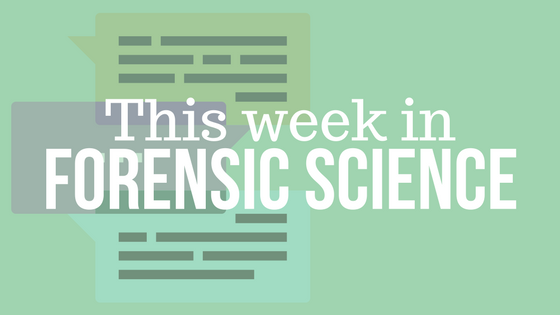No one has hours to scour the papers to keep up with the latest news, so we’ve curated the top news stories in the field of Forensic Science for this week. Here’s what you need to know to get out the door!
Saving the ‘King of Birds’ with DNA (BBC – 8/31/2018)
Scientists believe the DNA of the golden eagle can help protect and conserve the birds in the wild.
The genetic code which has been unravelled will be used to screen the health of birds and understand the habitat they need to survive.
When Your Body is a Crime Scene: New Initiative to Track Rape Kits (Yakima Herald – 9/1/2018)
- Using non-identifiable usernames and passwords, survivors can check the status of their kits online, from their creation in the hospital all the way through testing and completion. The kits have barcodes that are scanned into the system by officials each time they go to a different link in the chain of custody, much like tracking numbers for packages ordered online. Survivors are given a person to contact and local resources at each step.
Genealogy, DNA and Cigarette Butt Lead to Arrest in 2009 Murder in Illinois (Illinois News Network – 9/1/2018)
- “They used DNA databases, other open public records, including birth records, obituaries, even newspaper information to do this research,” Walsh said. “They did amazing work. They tracked the DNA ancestry literally back to the 1800s. And then, from that, worked forward building a family tree.”The sheriff said investigators connected the final dots when their suspect, 30-year-old Michael Henslick, dropped a cigarette butt. DNA testing of that butt matched DNA at the scene of Cassano’s murder. .
This Gizmo Can Turbocharge the DNA-Identification Process (New York Post – 9/3/2018)
Meet the newest (probationary) member of the Office of the Chief Medical Examiner: a cooler-sized gizmo called ANDE, which the agency says will turbocharge the process of identifying John and Jane Does, providing closure for families.
U.N. Talks to Tackle Tough Question: Who Should Benefit from DNA Collected from the High Seas? (Science – 9/3/2018)
It’s an eye-catching statistic: A single company, the multinational chemical giant BASF, owns nearly half of the patents issued on 13,000 DNA sequences from marine organisms. That number is now helping fuel high-stakes global negotiations on a contentious question: how to fairly regulate the growing exploitation of genes collected in the open ocean, beyond any nation’s jurisdiction.
Case Study: Local AFIS Eradicates Aliases in Ohio (Forensic Magazine – 9/5/2018)
Ripple effects of having a tool like this have improved the entire identification system—and largely cleared up the identification problems in West Chester, said Tivin.
The improvements are a case study in how maintaining a local AFIS, in the right situation and in the right place, can improve policing across an entire region.
DNA Nails Source of New Yorkers’ Shark Bites (Science – 9/5/2018)
In mid-July, two teenagers were bitten within minutes of each other while wading off beaches on Fire Island. A sliver of tooth taken from the wounds wasn’t quite big enough to compare to other teeth, so researchers there cleaned it and took a DNA sample from its interior. They then sequenced a small section and compared it to the same stretch of DNA from 900 shark species around the world.
New DNA Techniques will Spark Archeology Revolution, Expert Says (Science – 9/5/2018)
A revolution in archaeology will happen over the next decade, according to Prof Svante Pääbo, the leading expert on the DNA discovered in extinct Neanderthal cousins.
DNA Analysis Reveals History of Ancient Warriors (Technology Networks – 9/6/2018)
- In 1962, an Alemannic burial site containing human skeletal remains was discovered in Niederstotzingen (Baden-Württemberg, Germany). Researchers at the Eurac Research Centre in Bozen-Bolzano, Italy, and at the Max Planck Institute for the Science of Human History in Jena, Germany, have now examined the DNA of these skeletal remains.
Through Fragments of Long-Lost Lives, Lab Aims to Give Military Families a Measure of Peace (The Washington Post – 9/6/2018)
A revolution in archaeology will happen over the next decade, according to Prof Svante Pääbo, the leading expert on the DNA discovered in extinct Neanderthal cousins.
Advances in DNA Analysis Help Spanish Police Solve Old Crimes (El Pais – 9/6/2018)
A legal loophole allows greater scope in turning genetic samples into leads that help nail suspects
WOULD YOU LIKE TO SEE MORE ARTICLES LIKE THIS? SUBSCRIBE TO THE ISHI BLOG BELOW!


